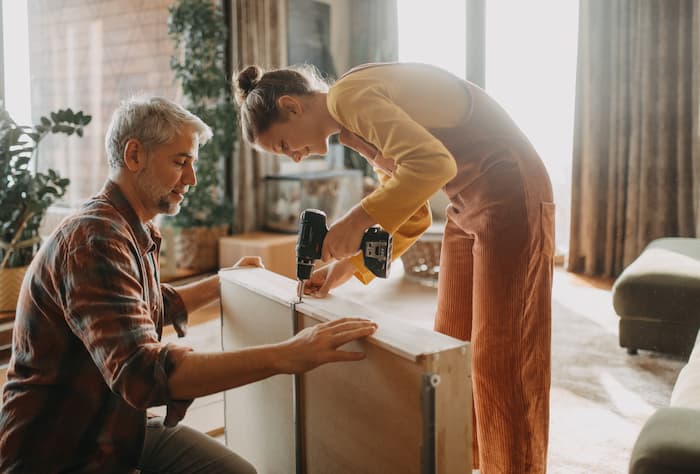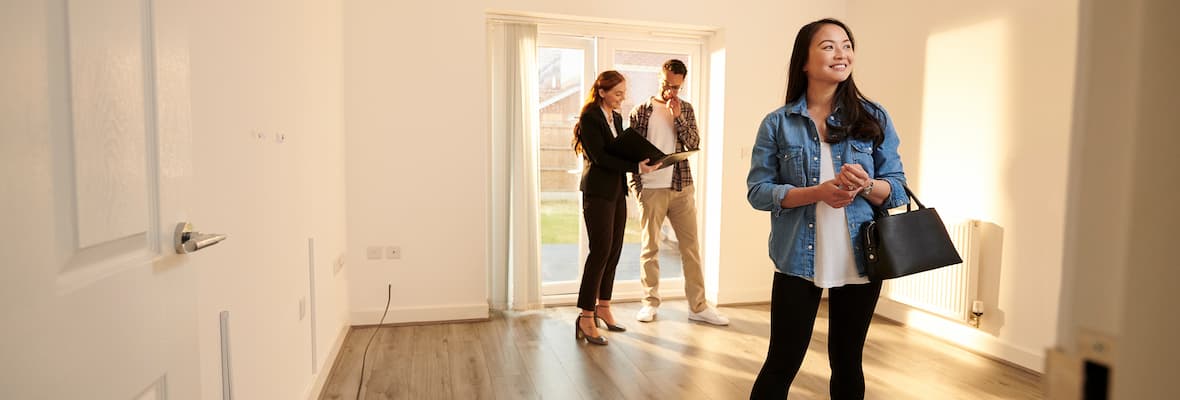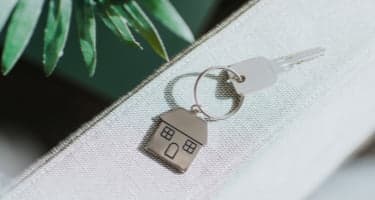As the Australian population continues to grow, so does the demand for more housing and this includes rental properties.
Renting out your property can be an exciting prospect, but there's more to being a landlord than just owning a home.
So before you take that next step, ask yourself how you (as a property owner) would prepare your property for potential tenants.
To help answer this question we've put together a list of tips on how you can prepare, manage and maintain your rental property over time.
Prepare Your Rental Property
After any major renovations, there are some steps you should take first to prepare the property for new tenants.
Value-Adding Upgrades

There are a number of ways you can upgrade your property to improve its rental value to prospective tenants.
Upon initial inspection, you should check for anything that's broken or damaged in your home.
This may include:
- Chipped paint
- Jammed locks
- Broken tiles
- Dripping taps
- Dirty windows
- Dirty floorboards or carpet
Next, you should look at the state of the kitchen and bathroom. Improving these two areas can add more value to your home and make it more desirable to tenants.
While this may sound costly, you can opt for cheaper improvements including using tile paint for old or stained tiles and replacing old shower curtains, shower heads and other fixtures in your bathroom.
In your kitchen, you can swap cabinet doors and replace the handles on your cupboards and doors.
You can even replace your dishwasher, oven or fridge to increase your kitchen's value if you plan on including some of these items in the rental. Tenants may be willing to pay more for new appliances, especially if the spaces for these appliances have unusual dimensions, which would normally require your tenants to buy new appliances.
Furnished or Unfurnished?

There are pros and cons to furnishing your rental property or leaving your rental unfurnished.
If you decide to fully furnish your property you can typically charge a premium to rent it out. This also will allow you to stage your property ahead of rental inspections.
However, there are additional costs associated with setting up and maintaining the property when you add furniture and being responsible for replacing or fixing furniture that is broken and/or not working.
And if your property is unfurnished then you won't have the added costs of buying new furniture.
On the downside, you're less likely to attract the type of tenants who are willing to pay for convenience, over furnishing their own apartment.
Marketing Your Property

As a first-time landlord, marketing your property by yourself may seem like one of the most daunting tasks in the process.
But there are some easy steps you can take to start:
1. Decide who you want to live on your property
Narrowing down the attributes and values of this person and/or people will allow you to focus on finding the right renters.
Are you looking for tenants who want a short-term lease or a long-term lease agreement? What draws potential tenants to the neighbourhood and what would make them less likely to move in?
Determining who your ideal tenants are, will allow you to focus on a core group of people when you begin reaching out to key contacts in your community.
2. Connect with your community
You can start by reaching out to friends, family and contacts in your community who are the type of tenants you'd want living on your property.
You can encourage your community to reach out to their wider communities to improve the amount of potential tenants you're reaching.
3. Get Social
Promoting your rental property in organic social posts and stories (on your personal social media accounts) is a great way for you to connect with prospective tenants in your online network.
Alternatively, if you want to engage a real estate agent then you can use their extensive networks and marketing channels to ensure that you reach an even wider audience of potential renters. Keep in mind that this option may be more costly over time.
Property Management or Private Renting
After purchasing your property you should weigh up the pros and cons of property management vs. privately renting out your home.
Using a Property Manager
You can start by talking with a real estate firm that has agents who specialise in property management.
With their experience property managers will work hard to make sure they find the right type of tenants for your property. They’ll also track rental payments and make sure they are paid on time and handle any tenants' concerns or complaints.
A property manager can also work to make sure all legal obligations and legislative requirements are met so that the tenancy runs smoothly.
And if you choose to employ an investment property manager keep in mind this will cost approximately 7-10% of your total rental income and these fees are generally tax-deductible. [1]
Renting Privately
Privately renting out your property means that you won't have to pay any property management fees.
You'll also have more control over screening prospective tenants, rental appraisals to determine how much a tenant pays and advertising the property for rent. You'll also have access to a national tenancy database where other landlords and agents add information about problem tenants from previous tenancies.
However, with more control comes more responsibility. As a private renter, you are also responsible for:
- Managing and attending property viewings
- Collecting and lodging rental bonds
- Collecting rent and chasing up late payments
- Dealing with tenant disputes
- Organising rental inspections
- Organising tradespeople for repairs and maintenance
- Understanding and meeting all legal requirements
Know Your Responsibilities
Under common law, landlords must guarantee the safety of any rental property and ensure it poses no risk to tenants, neighbours or the general public.
Tax, Standards and Regulations
According to the Australian Taxation Office (ATO), if you use property to earn income (at any time) you'll need to: [2]
- Keep all records from the start
- Work out what you can claim as deductions
- Work out if you need to pay tax in instalments throughout the year
- Declare all rental-related income in your tax return
While minimum housing standards will depend on the location of your property:
- New South Wales
- Queensland
- Victoria
- South Australia
- Tasmania
- Western Australia
- Australian Capital Territory
- Northern Territory
A landlord's responsibilities can also differ from state to state:
Getting the Right Documentation
According to the Residential Tenancies Authority (RTA), there are a number of forms and documentation for general tenancies.
These forms may include:
- Entry condition report - Records the condition of the property at the start of the tenancy.
- Bond lodgement form - Bonds paid by tenants should be lodged with the Residential Tenancies Bond Authority.
- Continuing interest notice - This notice was developed to support property managers/owners in meeting their obligations under a residential tenancy agreement. Residential tenancy agreements may vary from state to state.
- Entry notice - This form is used to give notice to tenants about an entry by the lessor or agent.
- Notice to leave - This form is used to provide the tenant/s notice they have to vacate the property.
- Exit condition report - Records the condition of the property at the end of the tenancy.
- General tenancy agreement - Used when renting out your property including a house, unit, apartment, townhouse or houseboat.
Keep in mind these forms may change depending on which state you rent out your property.
Landlord Insurance
You can reduce the amount of potential risk and damage to your property with Landlord Insurance.
Landlord Insurance protects against loss or damage to your rental property.
And if you choose to furnish your property then Landlord Contents Insurance can cover the cost to repair or replace contents you've provided if they are lost or damaged by severe weather, fire and more.






